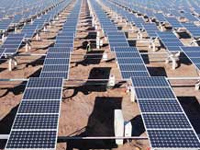Ozone and UV bulletin
The stratosphere ozone layer is slowly recovering and the recovery will be complete in most parts of the atmosphere in the coming decades, according to the latest bulletin by the World Meteorological Organization
The stratosphere ozone layer is slowly recovering and the recovery will be complete in most parts of the atmosphere in the coming decades, according to the latest bulletin by the World Meteorological Organization
Vast areas of deforested tropical peatlands do not receive noteworthy shading by vegetation, which increases the amount of solar radiation reaching the peat surface. Peat temperature dynamics and heterotrophic
The use of reflective surfaces offers one low-cost solution for reducing solar loading to urban environments and the Earth that should be considered as part of sustainable urban design. Here, we characterize
Solar energy is widely available throughout the world and can contribute to reduced dependence on energy imports. As it entails no fuel price risk or constraints, it also improves security of supply. Solar
Concentrating solar plants (CSP) generate solar thermal electricity (STE) while producing no greenhouse gas emissions, so it could be a key technology for mitigating climate change. In addition, the flexibility
Bioenergy with carbon capture and storage could be used to remove carbon dioxide from the atmosphere. However, its credibility as a climate change mitigation option is unproven and its widespread deployment

The ozone layer in the upper atmosphere protects humans and other organisms against ultraviolet (UV) radiation from the sun. About 90 per cent of all ozone molecules are found in the stratosphere, a region

This will be the American company's first project in India US-based First Solar Inc (FSLR), a thin film solar module manufacturer and developer of solar projects worldwide, plans to build a 45-Mw
The urban heat island (UHI), a common phenomenon in which surface temperatures are higher in urban areas than in surrounding rural areas, represents one of the most significant human-induced changes to
<p>UV light is an established carcinogen, yet evidence suggests that UV-seeking behavior has addictive features. Following UV exposure, epidermal keratinocytes synthesize proopiomelanocortin (POMC) that